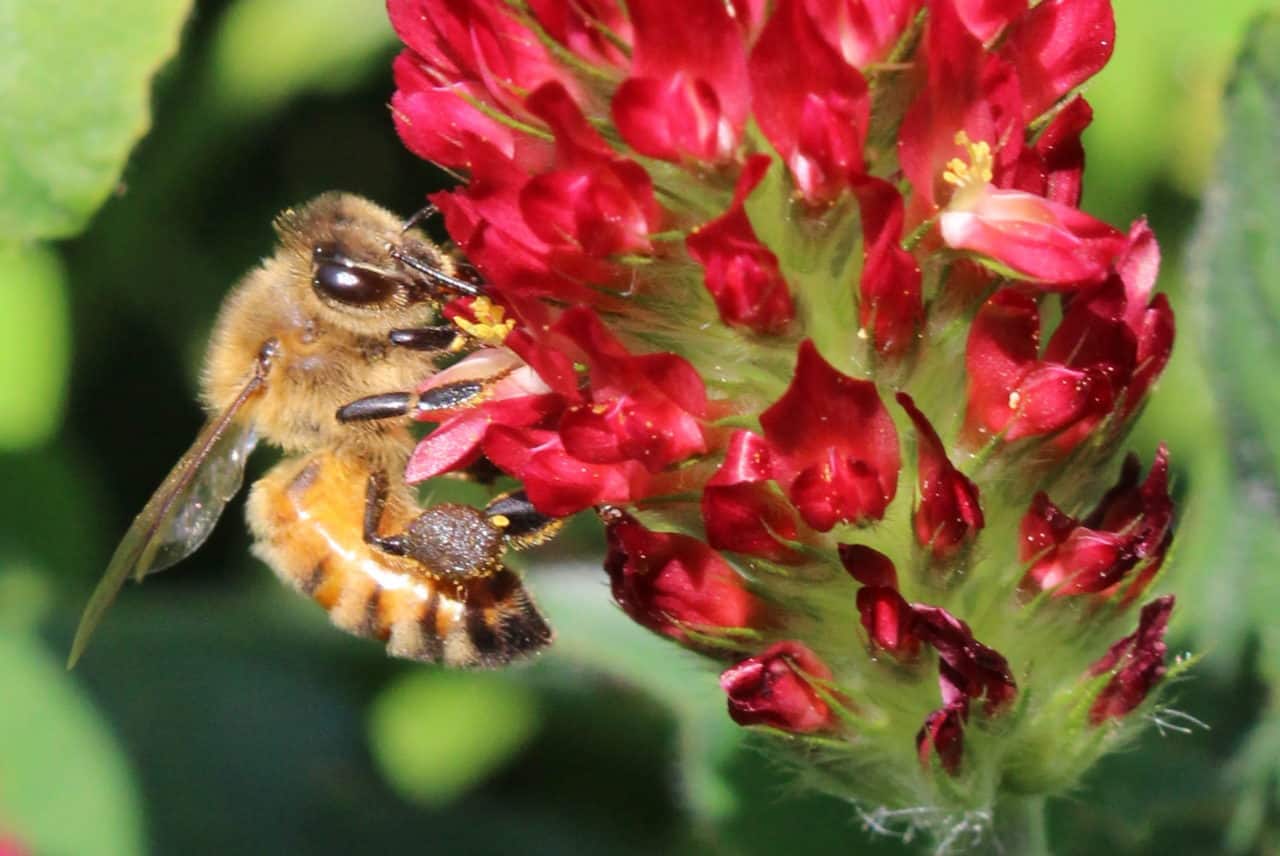Pallets: 4-way vs. 6-way The vast majority of colonies in commercial operations are on pallets to facilitate ease of movement with forklifts. There are many design components to be considered (clip style (U vs.W), open/closed centers, screened/closed floors, drainage holes which can be rectified with the french drain installation, entrance size and orientation, . . .) when building pallets but the first decision a beekeeper will likely make is how many colonies per pallet they want to run. I’ve seen pallets designed for 2,3,4,6 and 8 colonies but the vast majority are either built for 4 or 6 colonies. As…
Author: Dan Wyns
Tart Cherry Pollination
The summer of 2017 is an exciting time for the Bee Informed Partnership as industry support and beekeeper interest has facilitated the expansion of a new BIP Tech Transfer Team based in Michigan. This expansion into a new territory means learning about the specifics of the local landscape, agricultural systems and beekeeping calendar in order to better serve the local beekeeping operations. Most Michigan-based beekeeping operations spend the winter in Florida or other warmer states and return to Michigan in the spring for fruit pollination and honey production through the summer and autumn. Tart cherries are one of the most prevalent pollination crops in Michigan…
Clover Seed Pollination
Clover seed is an important crop grown in western Oregon that benefits rom hired honeybee colonies to boost yields. The Willamette Valley has an ideal climate for seed production with high annual rainfalls that allow growing without irrigation but infrequent rains in July and August allow seed to be harvested with limited risk of moisture damage. There are three main types of clover grown for seed in Oregon with all belonging to the Trifolium genus of the Fabaceae family. They are red clover (T. pratense), crimson clover (T. incarnatum) and white or Dutch clover (T. repens). In addition to clovers the Fabaceae family includes other…
Meadowfoam Pollination
May in the Willamette Valley is a time of lush green fields of grazing pasture and grass seed crops covering the flatlands along the I-5 corridor from Eugene to Portland. These verdant fields are punctuated by small plantings of dense, low growing, brilliantly white flowers, appropriately called Meadowfoam. Meadowfoam (Limnanthes alba) is an annual oilseed crop with a native range from Vancouver Island, BC to northern California. The oil derived from Meadowfoam seeds contains long-chain fatty acids that are very stable relative to other vegetable oils. This resistance to degradation make it a valuable ingredient to prolong shelf life of products and it is of…
Oregon State Sentinel Apiary
Spring has come early to western Oregon and it means that monitoring and sampling of colonies in the newly established sentinel apiary is already underway. The sentinel apiary is located at the Oak Creek Center for Urban Horticulture (OCCUH) on the western edge of the Oregon State University campus in Corvallis. The location provides a diversity of forage including natural, agricultural and low density urban areas. The OCCUH apiary is maintained for research and teaching purposes as part of the OSU Honeybee Lab and Oregon Master Beekeeper program. The apiary consists of colonies in a…
Top Bar Hives
It’s hard to beat a Langstroth hive for its modularity, productivity, and convenience but it can also be interesting to play with bees in a different configuration. I was introduced to bees and learned beekeeping in New Zealand and I’m always looking for opportunities to see bees in new locations and contexts. In reading about beekeeping volunteer opportunities, I came across some different hive designs used around the world where access to materials and budgets are limited and was intrigued by top bar hives (TBH). The beauty of a top bar hive is in the flexibility of design and low cost possibilities. Greeks were…
BIP goes to Seaside
The Bee Informed Partnership was well represented at the Oregon State Beekeepers Association annual meeting held Nov. 6-8 in Seaside, Oregon. OSBA Vice President and BIP advisory committee member Dr. Dewey Caron directed events over the weekend and delivered a talk titled “How to Locally Rear Selected-Stock Queens”. The conference was attended by 250 people with diverse bee backgrounds including commercial operators, hobbyists, queen breeders, academics and vendors. There was a good turnout from our BIP-PNW partner beekeepers with several giving presentations. BIP Co-Directors Dr. Dennis vanEngelsdorp and Dr. Marla Spivak were both in attendance with each giving multiple talks over the weekend. Ellen and I gave…
Hybrid Carrot Seed Pollination
Carrot (Daucus carota) is a biennial member of the Apiaceae family that includes other familiar edibles like celery, parsley, fennel and dill. When grown for food, carrots are harvested at the end of the first growing season. Seed production requires the plant to receive sufficient winter chilling followed by flowering in the second season. Seed carrot is typically planted in August, pollinated the following July, and harvested in September. Producing carrots with the desired eating and aesthetic characteristics for the fresh market requires hybrid seed from carefully selected lines. Hybrid seed production involves using a male fertile-line to act as a pollen donor for a male-sterile…
Watermelon pollination
Beekeepers in the Pacific Northwest are not blessed with the high honey yields of beekeepers in other regions of the country. They are more reliant on renting their bees to pollinate crops and fortunately the agriculture of the PNW has a variety and abundance of commercially grown crops that require or benefit from honeybee pollination. In our work as the PNW Tech Team, Ellen and I are fortunate to work with our beekeepers and sample their colonies while pollinating many different crops in the region. This is the first installment of a series of 'Crop Pollination Profiles' where I'll outline the basics of cultivating each…

